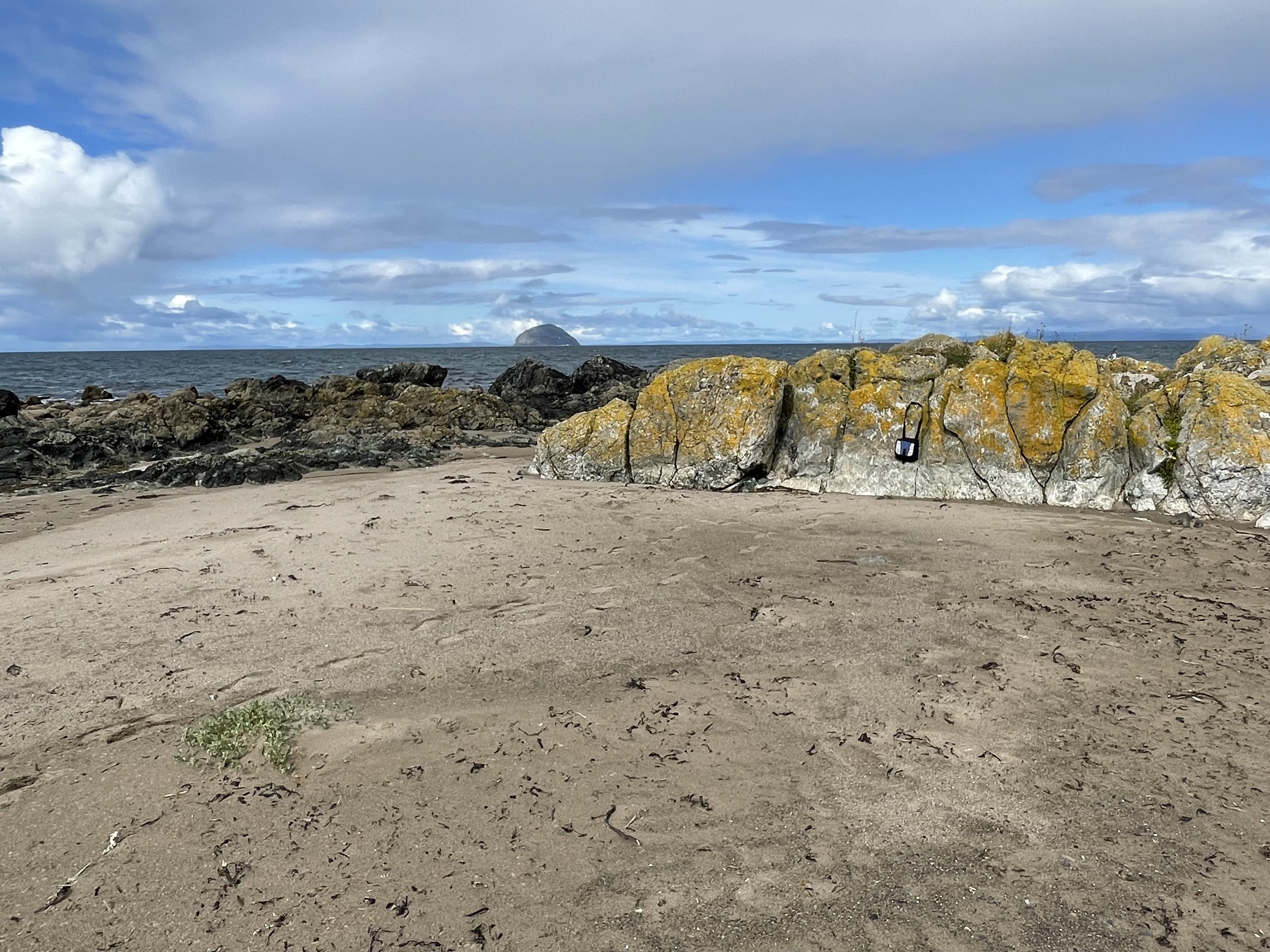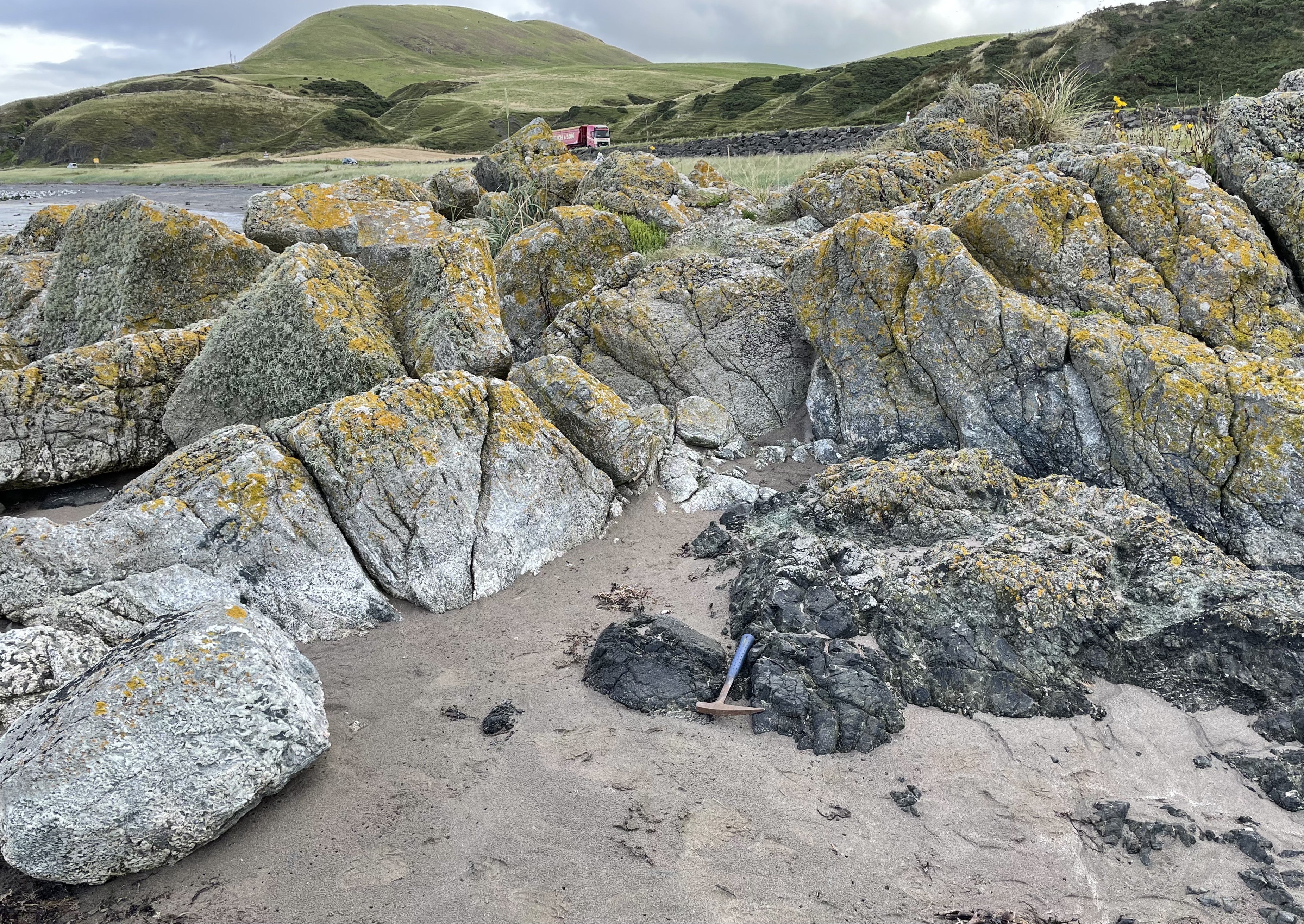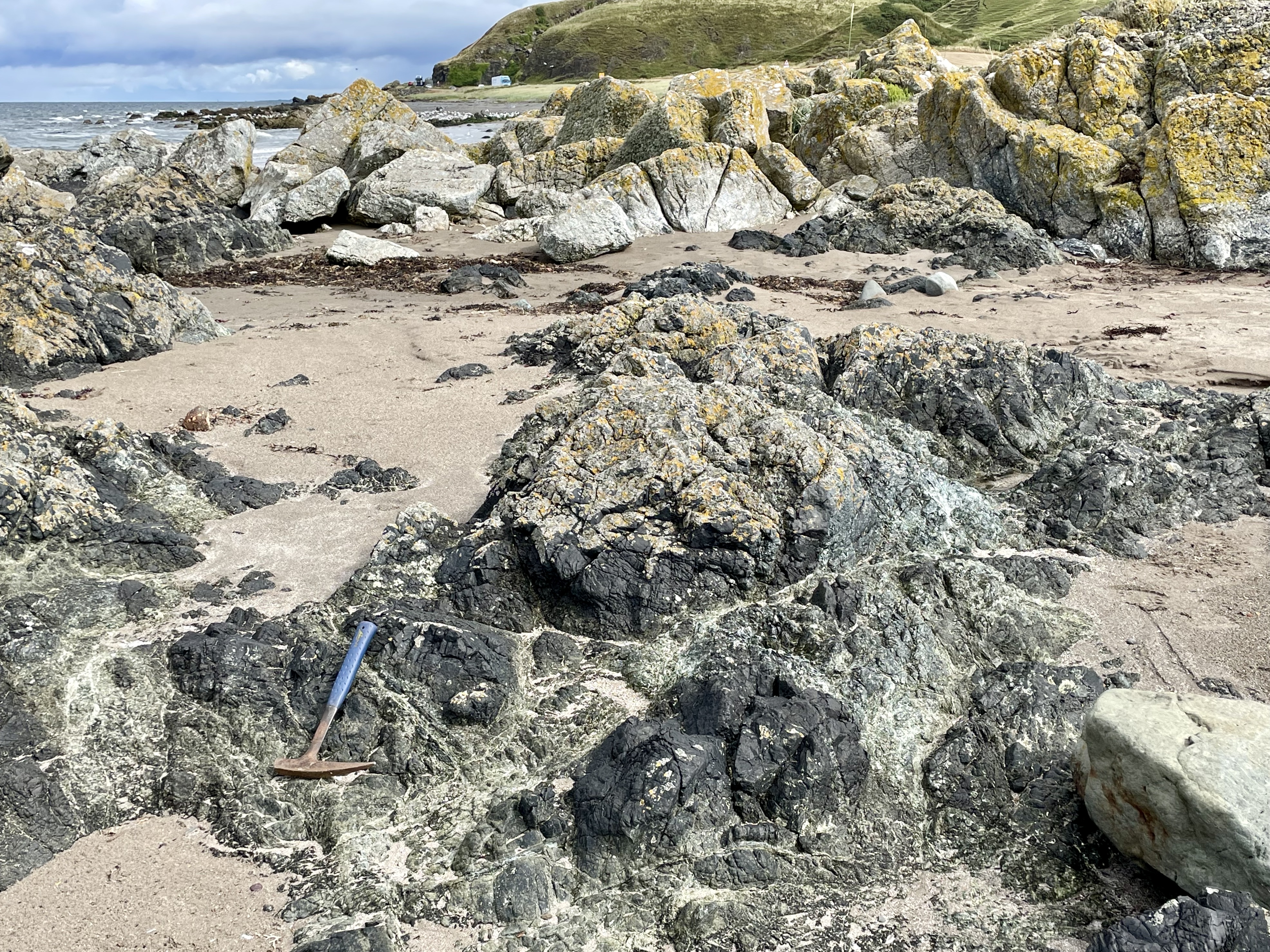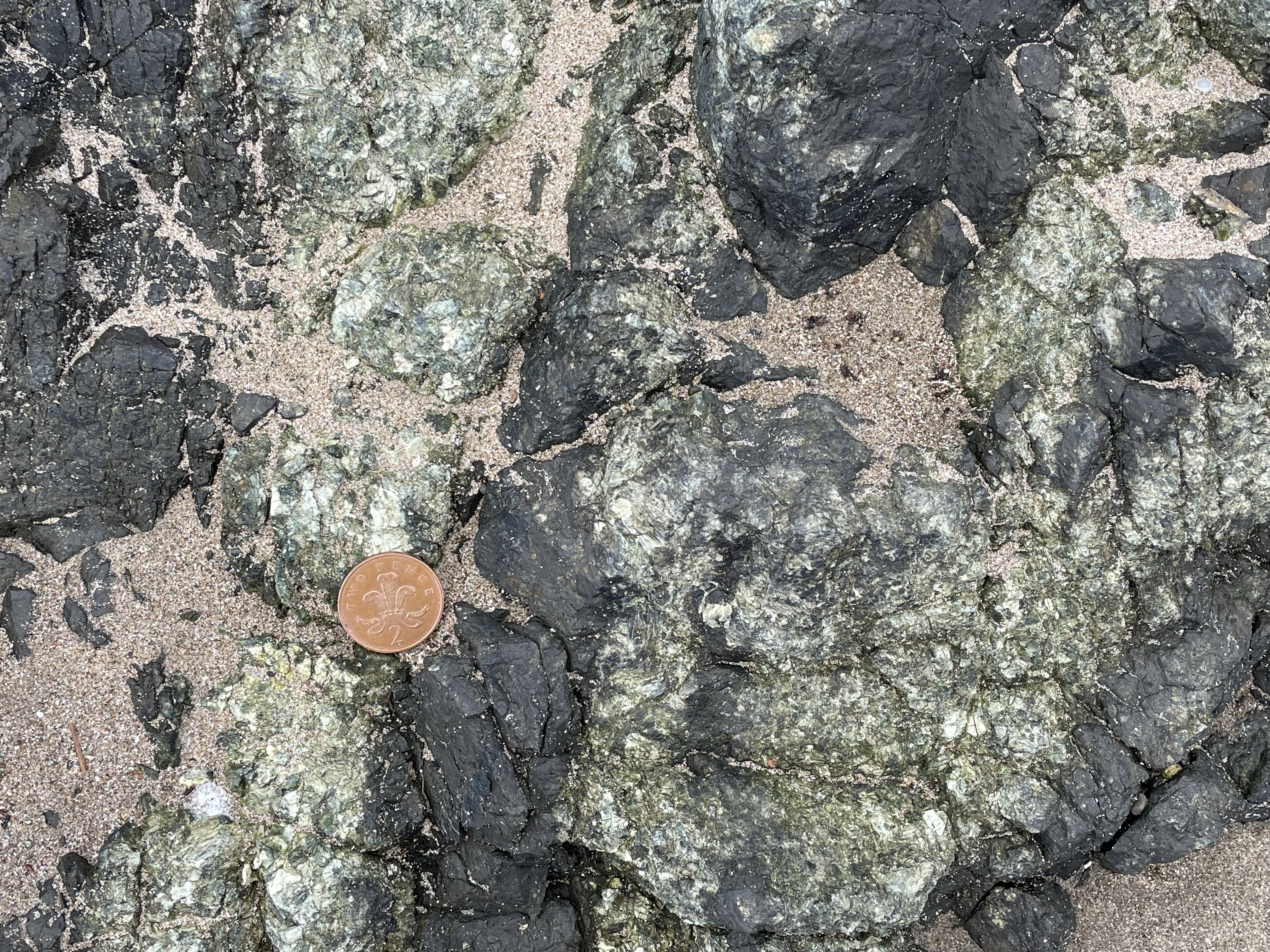Slockenray Coast
Geological Conservation Review site | GCR #2411 | Igneous Petrology | Ordovician Igneous
Geological Conservation Review site | GCR #2411 | Igneous Petrology | Ordovician Igneous
Scotland's geosites are chosen because of their local, national or international importance. Take only photos, leave only footprints: avoid causing any damage to this site. You can walk almost anywhere in Scotland without the need to ask permission or keep to paths, but you have a responsibility to care for your own safety, to respect people's privacy and peace of mind and to cause no damage.
This site is a Site of Special Scientific Interest (SSSI). It is an offence to intentionally or recklessly damage the protected natural features of a SSSI, and this includes unauthorised sample collection.
The right of access does not extend to quarries, building sites or any land where public access is prohibited, or to the collection of geological samples.
The Ballantrae Complex, of Ordovician age, consists of three belts of pillow lavas and associated sediments, separated from each other by ultramafic intrusive rocks. The Complex shows many of the features of an obducted ophiolite although geochemical studies indicate that the various igneous rocks were generated in a variety of tectonic settings and have since been tectonically juxtaposed. The Pinbain Block is the most northerly of the lava belts in the Ballantrae Complex and is well-exposed along the coast at Slockenray. In the southern part of the site conglomerates are interbedded with cherts and black shales. The shales show soft-sediment deformation structures and it is thought that the conglomerate bodies, which contain boulders up to several metres in length are olistostromes. The variety of the clasts, representing almost all the known rock types found in the Complex, shows that the ophiolite was being actively eroded at the time the conglomerates were accumulating. Further north, the section exposes spilitic lavas and volcanogenic sediments. The latter show upwards coarsening sequences which record the build up of a hyalotuff delta formed in front of advancing lava flows in shallow water conditions.
https://earthwise.bgs.ac.uk/index.php/Pinbain_Block_-_an_ex…'s_Dyke_[NX_1347_9113]:_Gabbro_pegmatite_(Figure_25.17)
Locality 13. Bonney's Dyke [NX 1347 9113]: Gabbro pegmatite. Pinbain Block - an excursion - From: Lawson, J.D. and Weedon, D.S. (editors). 1992. Geological excursions around Glasgow & Girvan. Glasgow : Geological Society of Glasgow
Bonney's Dyke was named by Balsillie (1932) after the famous petrologist T.G.Bonney. The feature is not a dyke but a steeply dipping, sill-like sheet intruded into serpentinite, comprising a coarse gabbro pegmatite of altered diallage and feldspar, most of the latter being replaced by white prehnite and pectolite. The following points should be noted: the sheet thins towards the west: it is sinistrally shifted by a number of faults and as such provides an excellent strain marker within the serpentinite: it has a hydrogrossular northern margin and contains rafts of serpentinite. The serpentinite to the immediate south of the sheet contains large crystals of diallage: to the immediate north is a norite with enstatite crystals enclosed in plagioclase; the norite is only visible at low tide.
https://earthwise.bgs.ac.uk/index.php/Girvan_and_Ballantrae…'s_Dyke_and_Pinbain_Beach:_gabbro_pegmatite,_Balcreuchan_Group_melange_and_breccia
Girvan and Ballantrae - an excursion. By P Stone. Excursion 8. From: Stone, P (editor). 1996. Geology in south-west Scotland: an excursion guide. (Keyworth, Nottingham: British Geological Survey.)

Bonney's gabbro dyke on right, against country-rock serpentinite; Ailsa Craig in background.
Con Gillen
Aug. 24, 2023

Bonney's dyke, intruded into serpentinite - ultramafic rock, originally mostly wehrlite.
Con Gillen
Aug. 24, 2023

Pegmatitic texture of Bonney's gabbro dyke.
Con Gillen
Aug. 24, 2023

Detail of pegmatitic texture in dyke.
Con Gillen
Aug. 24, 2023

Sheared serpentinite adjacent to Bonney's dyke.
Con Gillen
Aug. 24, 2023

Detail of texture in serpentinite adjacent to Bonney's dyke. Pale green veins are 'diallage' - altered pyroxene.
Con Gillen
Aug. 24, 2023